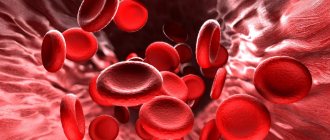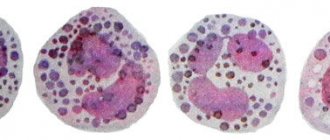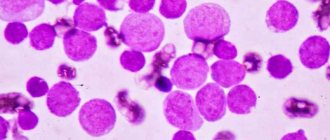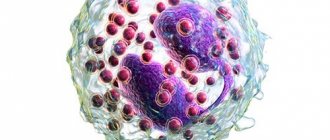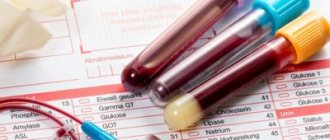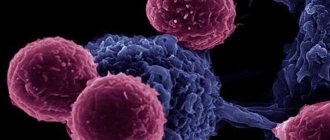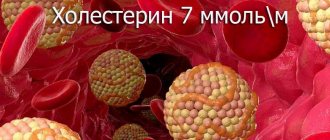Formed cells are represented by a wide group of structures that perform their own inherent functions. In more detail, three groups of cytological units can be distinguished.
- Red blood cells. Responsible for transporting oxygen and transporting gases in the body. Thus, normal tissue respiration is ensured, which is necessary for full life.
- Platelets. Responsible for the activity of the coagulation system. Thanks to these plates, it is possible to close anatomical disturbances and wound surfaces and ensure adequate recovery. Stopping bleeding.
- Leukocytes. A numerous fraction, which typically performs the functions of protecting the body from foreign agents.
The latter cells, known as white blood cells, are also not uniform in composition. There are two types of their structure.
Agranulocytes:
- Monocytes. Large units.
- Lymphocytes. Responsible for the secondary immune response.
Granulocytes:
- Neutrophils. The most numerous class of leukocytes. Makes up to 70% of the total mass and even more.
- Eosinophils.
- Basophils are large cells that provide an immune response and participate in allergic reactions.
The latter will be the subject of our further conversation on the topic of leukocyte cells. What are they and why are they needed.
What are basophils in a blood test?
Basophils are a subpopulation of white blood cells. A distinctive feature is the ability of the core to absorb the main dye. This ability makes it easy to differentiate basophils from other cells in the blood.
Recall that eosinophilic granulocytes stain intensely pink, and neutrophils absorb acidic and basic dyes.
Due to the high content of histamine granules, leukotrienes, prostaglandins and other mediators of allergic reactions, the nucleus in the cytoplasm is practically indistinguishable. In comparative terms, the cell sizes are significantly larger than representatives of other subpopulations of leukocytes: neutrophils and eosinophils.
Why are basophils needed?
Basophils were originally thought to act as precursors of mast cells in the blood. The basis for this statement was their morphological and functional similarity. Both types of cells contain granules and allergy mediators in the cytoplasm. And upon contact with class E immunoglobulins, histamine is released.
However, a detailed study of the cells refuted this assumption. It has been established that basophils enter the blood from the bone marrow already mature. At the same time, mast cells mature in the human systemic bloodstream and only after that penetrate into tissue cells. It is only fair to say that these two types of cells are related.
The main role of basophils: participation in the development of an allergic reaction - anaphylaxis. It occurs against the background of repeated contact of a person with a substance to which he shows individual intolerance. The incidence of deaths reaches 20%. In this case, basophils in the blood are increased to critical levels.
The mechanism of the protective reaction is based on the ability to quickly destroy basophilic granulocytes and release their cellular contents. Upon contact with the antigen-antibody complex, cell dissolution also occurs.
Allergic reaction mediators enter the blood in large quantities, which trigger a typical immune response. The protective mechanism allows you to block the spread of toxins through organs and tissues in the human body. A natural influx of fluids with various types of leukocytes occurs at the site of localization.
Another feature is the ability to penetrate through the walls of blood vessels beyond their limits and further exist in the tissues of organs. In this case, basophils become full-fledged tissue mast cells.
There is information about their phagocytic activity and the ability to move when exposed to a chemical stimulus. However, under natural conditions, the implementation of this function is minimized.
Functions of basophilic granulocytes
- They support the blood supply to small blood vessels, thanks to which tissue cells are saturated with oxygen.
- Participate in the formation of new capillaries.
- Transmits a signal to other leukocytes for their further movement to the sites of localization of pathogenic agents
- Prevents the development of parasitic infections.
- Prevent the spread of poison throughout the body (for example, with a snake bite).
- Protect the skin and mucous membranes from the penetration of parasites.
- They form the body's response to the allergen. This is considered the main function of basophils.
- They take part in cleansing tissues of biologically active agents.
Basophils - the norm in women, men and children by age in the table
In percentage terms, the number of basophilic granulocytes is minimal compared to neutrophils, lymphocytes, monocytes and eosinophils. The number of cells does not depend on the time of day; however, to obtain the most accurate results, it is recommended to take the test in the morning before 10 o’clock.
Important: the norm of basophils in the blood of women, men and children is identical.
| Normal values | Percentage of the total number of leukocytes | Absolute values |
| Age and gender don't matter | 0 – 1 % | 0 – 0.09*109 /l |
It should be noted that absolute values reflect a more accurate picture of health than percentages. If a person has elevated basophils in a clinical blood test, then a repeat test using a leukocyte formula is prescribed. If necessary, the number of cells is counted manually under a microscope.
Symptoms and causes of decline
Basopenia rarely manifests itself openly, since fluctuations in the number of cells are insignificant against the general background. To diagnose it, it is necessary to donate blood for analysis with a detailed lymphocyte formula. Violations should be suspected if a person experiences a deterioration in their general health and has a tendency to allergic reactions and infectious diseases.
If basophils are low in an adult, the reasons may be as follows:
- pregnancy;
- thyroid diseases;
- acute infectious diseases;
- severe stress;
- Itsenko-Cushing's disease;
- prolonged intense allergic reactions;
- inflammatory diseases of the respiratory system;
- bone marrow dysfunction;
- carrying out chemotherapy;
- taking corticosteroids.
An increase in blood volume in the 1st trimester of pregnancy leads to a natural decrease in the number of cells
Most often, the reason for the reduction in the number of basophils is hormonal factors. This is primarily due to progesterone and estrogen. A special role is played by a disorder such as hyperthyroidism. Therefore, it is necessary to take into account if basophils in the blood are reduced, what this means in terms of regulation of the body’s activity at the hormonal level. If the disorder is not eliminated, the consequences will spread to all systems and organs.
If basophils are elevated in an adult, what does this mean?
If basophils are elevated in an adult, then the doctor initially makes the assumption that an allergic response is developing. Allergens can include food, pollen, dander and epithelium of pets, mites, pollen and medications. Their number reaches tens of thousands, so determining a specific allergen is difficult in practice (for this, a set of special tests with allergens is performed).
The doctor collects the patient’s medical history, including hereditary predisposition to individual intolerance to various substances. Diagnostics is facilitated by information about the specific reaction of the human body to contact with certain allergens. If it is impossible to determine the irritant based on an allergic history, a skin test or measurement of specific class E immunoglobulins in the blood is performed.
Currently, complex allergy chips have been developed. Thanks to which it is possible to simultaneously determine the patient’s sensitivity to 110 allergens from 50 sources. The disadvantage of the technique is its high cost.
If specialists have ruled out an allergic reaction, and basophils are elevated even with repeated tests, then additional studies are carried out.
Causes in common diseases
One of the causes of this condition is ulcerative colitis, when inflammation of the mucous epithelium of the human colon occurs. Possible causes: hereditary predisposition, infection with pathogens, complications after taking oral contraceptives or smoking.
Basophils above normal are determined in test results in chronic hemolytic anemia. The incidence of the disease is extremely rare. It manifests itself in the form of uncontrolled destruction of red blood cells. As a result, the synthesis of red blood cells in the human body is activated and the concentration of their breakdown products increases significantly.
The prognosis for outcome is typically favorable. If the disease develops against the background of external factors, as a rule, their cancellation leads to recovery. The exception is the congenital form of the pathology, but even in this case, the methods of modern medicine provide a person with long-term remission.
The patient should also be checked for cancer of various locations. First of all, it is necessary to exclude malignant lesions of the circulatory system (leukemia). As a rule, these pathologies are accompanied by deviations from the norm in all parameters of a clinical blood test.
Despite the fact that phagocytosis is not the main function of basophilic granulocytes, their increase can be observed during infectious infections. For example, tuberculosis, chickenpox or viral flu. The human immune system is activated and the production of all protective blood cells is increased.
Also, the level of basophils can increase in chronic myeloid leukemia (eosinophilic-basophilic associations), myxedema (decreased synthesis of thyroid hormones), nephrosis, Hodgkin's disease, after splenectomy, as well as during therapy with estrogen and antithyroid drugs.
Read further: Leukocyte blood count - decoding in adults and children, normal
Increased basophils (basophilia)
The condition develops when the number of basophils increases to more than 0.2*109 /l.
Important! Basophilia can be caused by taking hormonal drugs (estrogens), antithyroid drugs. Also, the number of basophils increases in women in the first days of the cycle.
In clinical practice, an increase in basophils is rare and occurs when:
- diseases of the gastrointestinal tract (chronic form): ulcerative colitis;
- enterocolitis;
- gastritis;
- peptic ulcer of the stomach and duodenum, etc.;
- myeloid leukemia (chronic form);
An increase in the number of basophils indicates impaired immunity and active invasion of a foreign agent. Chronic basophilia is also observed in patients who have had their spleen removed.
What does it mean when basophils are elevated in a child?
The reasons for an increase in basophils in a child are not always pathological. A short-term increase in their concentration is observed in children with:
- the need to take medications. Especially if they contain components that cause an allergic reaction;
- introduction of foreign proteins;
- a latent inflammatory process that does not manifest itself in the form of clinical symptoms. In this case, it is recommended to undergo a comprehensive examination and exclude low-grade inflammation;
- a recent vaccination or insect bite, which can trigger an allergic response.
Therefore, if you receive results that deviate from the norm, you should not worry. It is recommended that the child be tested again 5-7 days after eliminating the influence of external factors.
If elevated values are repeatedly detected, a large-scale diagnostic examination of the small patient is carried out in order to establish a diagnosis. The reasons for the increase in the concentration of basophilic granulocytes are similar to adult patients.
Note: The norm of lymphocytes in the blood of a child by age is in the table
What does it mean when basophils are low in an adult?
A moderate decrease in the indicator during therapy for a high content of basophilic granulocytes is a sign of correctly selected treatment methods.
In most cases, a decrease in the level of basophils in the blood has no diagnostic value. The exception is cases when there is a complete absence of basophils and a decrease in all leukocyte cells.
Possible reasons for such changes in the blood:
- exhaustion of the body due to chronic pathologies;
- suppression of the immune system;
- severe physical or emotional stress;
- disruption of the endocrine system and disruption of normal hormonal levels. For example, excess thyroid hormones or anterior pituitary gland;
- side effects from prednisolone treatment;
- decreased hematopoietic function of the bone marrow;
- acute stage of pulmonary inflammation.
If the test results for an adult or child indicate 0 (zero) in the “basophils” column, then this may be a variant of the physiological norm. In the absence of pathological symptoms, the condition does not require medical attention. The required number of basophilic granulocytes is produced by the bone marrow as needed.
Treatment of basopenia
Basopenia is often just a sign of some disorder or pathology. In order to eliminate it, it is necessary to establish the cause that provoked it. This will require not only laboratory, but also instrumental diagnostic methods. After identifying the factor that provokes the disease, all efforts are directed towards its elimination and treatment of the root cause.
Additional examination of the patient is necessary
When pathologies of the hematopoietic system are detected, there may be deviations in the content of other types of blood cells, both up and down. Separately, it is worth noting the period of pregnancy. At this time, there is an intensification of the production of blood volume, and specifically its plasma. In this case, the number of cells remains practically unchanged until the body adapts to new needs. As soon as this happens, the indicators will return to normal. In this case, a slight deficiency or excess of basophils is considered normal, but if the deviations are significant, it is necessary to clarify the health status of the pregnant woman.
Advice: if basophils in the blood are low in an adult for no apparent reason, efforts must be directed toward strengthening the immune system.
To do this, you need to minimize the stress impact on the body, normalize the rest and activity regime. The main role in this issue is given to the elimination of bad habits, healthy eating and physical activity. Vegetables and cereals, as well as fish and lean meat should be added to the diet to compensate for the deficiency of useful elements necessary for the full functioning of the hematopoietic system.
Basopenia is not as dangerous as basophilia, but a lack of these granulocytes can lead to a decrease in the body's defenses. That is why it is important to bring the indicators back to normal as soon as possible and concentrate your efforts on preventing the development of repeated deviations.
← Causes and dangers of increased basophil levels in children
Reasons for increased or decreased neutrophils in blood tests in children? →
We recommend studying similar materials:
- 1. Autoimmune hemolytic anemia in children: what is missing and how it manifests itself
- 2. How to choose a diet based on your blood type: losing weight together
- 3. Causes and dangers of increased basophil levels in children
- 4. What does a high level of neutrophils mean and is it dangerous?
- 5. Norms for the content of neutrophils in the blood and what functions they perform
- 6. What do elevated eosinophils mean in a blood test in adults?
- 7. What to do if the level of basophils increases and what does this mean?
How to reduce the level of basophils?
All treatment should be prescribed exclusively by a specialist. The complex of therapy performed is determined by the underlying disease that caused a decrease or increase in the level of basophilic cells.
If the deviation from the norm is insignificant, then the patient is prescribed a complex of vitamins. For example, B vitamins have a positive effect on the process of hematopoiesis and regulate the number of cells of leukocyte subpopulations.
You can also get vitamins from food, for example:
- beef meat and beef by-products (liver, kidneys, tongue);
- pork liver;
- rabbit;
- chicken egg yolks;
- seafood (clams, oysters, crabs);
- fish (herring, mackerel, chum salmon);
- fermented milk products (kefir, yogurt, cottage cheese);
- lettuce leaves;
- spinach;
- green onions.
Regular consumption of these products will help prevent the development of anemia.
If the patient was taking medications, they should be discontinued and the analysis repeated. It is possible that the drugs are the reason for the increase in the concentration of basophilic granulocytes.
In case of infectious infections, it is necessary to initially conduct a course of antiviral therapy. The etiological identity of the infectious agent is determined: virus, bacteria or microscopic fungi.
If a bacterial infection is detected, an additional test is performed - an antibiogram, which allows you to select the most effective drug. Therapy for a viral infection consists of prescribing antiviral and immunostimulating drugs. Mixed infection involves the selection of different groups of drugs. Fungal diseases are treated similarly to bacterial infections, only with the use of antifungals.
